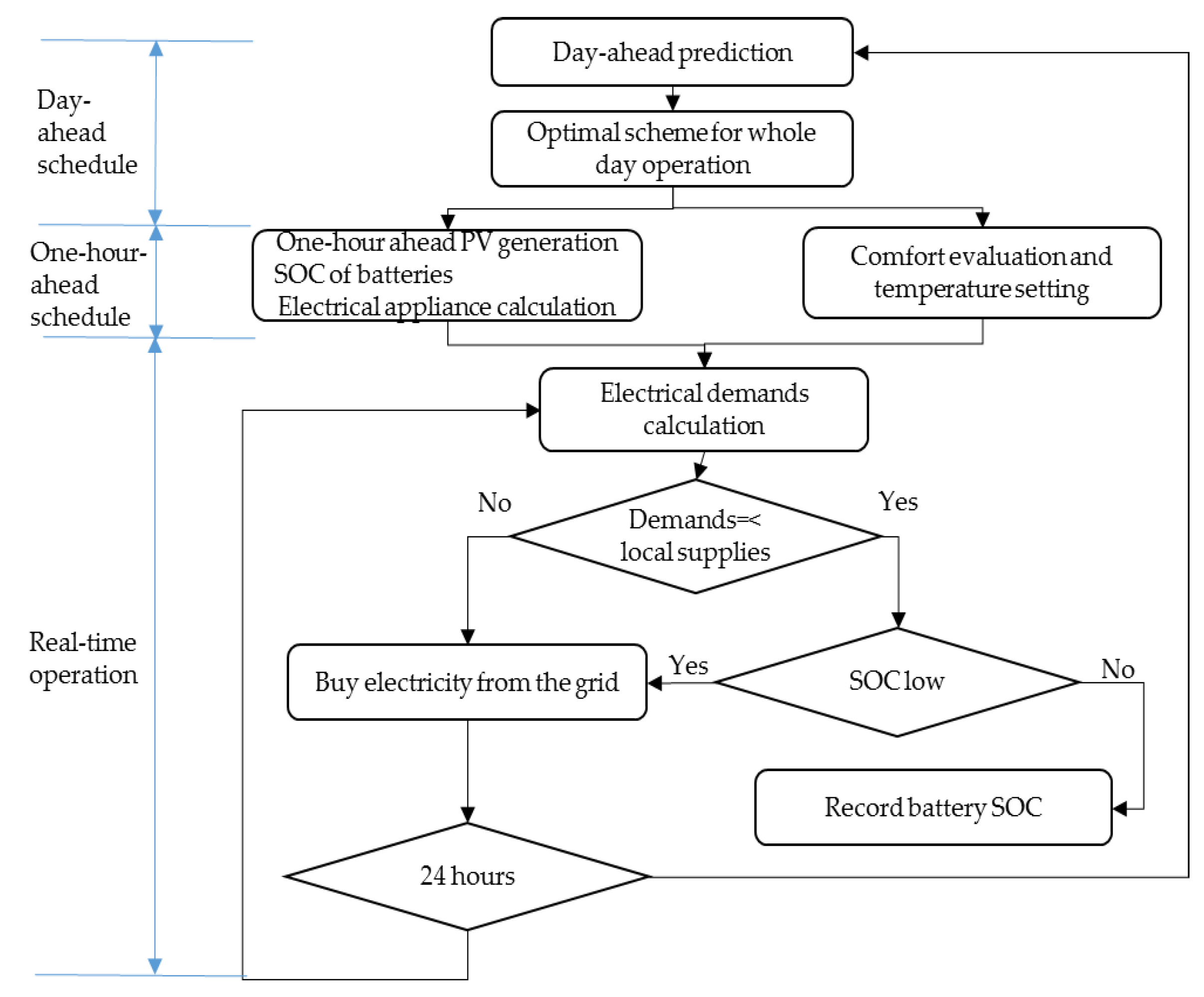Smart Energy Management for Unlocking Demand Response in the Residential Sector †
Abstract
:1. Introduction
2. Domestic Energy Consumption and Supplies
2.1. Typical Energy Profiles in Domestic Buildings
2.2. Shiftable Loads and Non-Shiftable Loads
3. Methodology
3.1. Top-Level Optimisation
3.2. Real-Time Operation
4. Case Study
5. Conclusions
Author Contributions
Funding
Conflicts of Interest
References
- Horbach, J.; Rammer, C. Energy transition in Germany and regional spill-overs: The diffusion of renewable energy in firms. Energy Policy 2018, 121, 404–414. [Google Scholar] [CrossRef]
- Weir, T. Renewable energy in the Pacific Islands: Its role and status. Renew. Sustain. Energy Rev. 2018, 94, 762–771. [Google Scholar] [CrossRef]
- Mourshed, M.; Robert, C.; Ranalli, A.; Messervey, T.; Reforgiato, D.; Contreaue, R.; Becue, A.; Quinn, K.; Rezgui, Y.; Lennard, Z. Smart grid futures: Perspectives on the integration of energy and ICT services. Energy Procedia 2015, 75, 1132–1137. [Google Scholar] [CrossRef]
- Arteconi, A.; Hewitt, N.J.; Polonara, F. Domestic demand-side management (DSM): Role of heat pumps and thermal energy storage (TES) systems. Appl. Therm. Eng. 2013, 51, 155–165. [Google Scholar] [CrossRef]



| Parameter | Without Optimization | With Optimization |
|---|---|---|
| Demand (kWh) | 50.09 | 40.08 |
| Electricity bought (kWh) | 25.28 | 11.88 |
| Electricity sold (kWh) | 0.77 | 2.82 |
| PV energy (kWh) | 24.81 | 24.81 |
| Peak demand (kW) | 4.54 | 3.50 |
| Electricity cost (£) | 2.98 | 1.95 |
Publisher’s Note: MDPI stays neutral with regard to jurisdictional claims in published maps and institutional affiliations. |
© 2018 by the authors. Licensee MDPI, Basel, Switzerland. This article is an open access article distributed under the terms and conditions of the Creative Commons Attribution (CC BY) license (https://creativecommons.org/licenses/by/4.0/).
Share and Cite
Chen, X.; Weng, K.; Meng, F.; Mourshed, M. Smart Energy Management for Unlocking Demand Response in the Residential Sector. Proceedings 2018, 2, 1136. https://doi.org/10.3390/proceedings2151136
Chen X, Weng K, Meng F, Mourshed M. Smart Energy Management for Unlocking Demand Response in the Residential Sector. Proceedings. 2018; 2(15):1136. https://doi.org/10.3390/proceedings2151136
Chicago/Turabian StyleChen, Xiangping, Kui Weng, Fanlin Meng, and Monjur Mourshed. 2018. "Smart Energy Management for Unlocking Demand Response in the Residential Sector" Proceedings 2, no. 15: 1136. https://doi.org/10.3390/proceedings2151136
APA StyleChen, X., Weng, K., Meng, F., & Mourshed, M. (2018). Smart Energy Management for Unlocking Demand Response in the Residential Sector. Proceedings, 2(15), 1136. https://doi.org/10.3390/proceedings2151136





